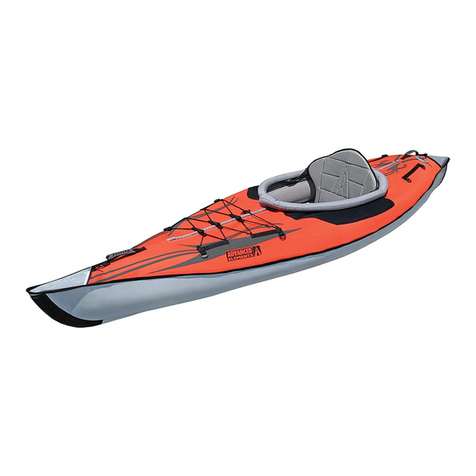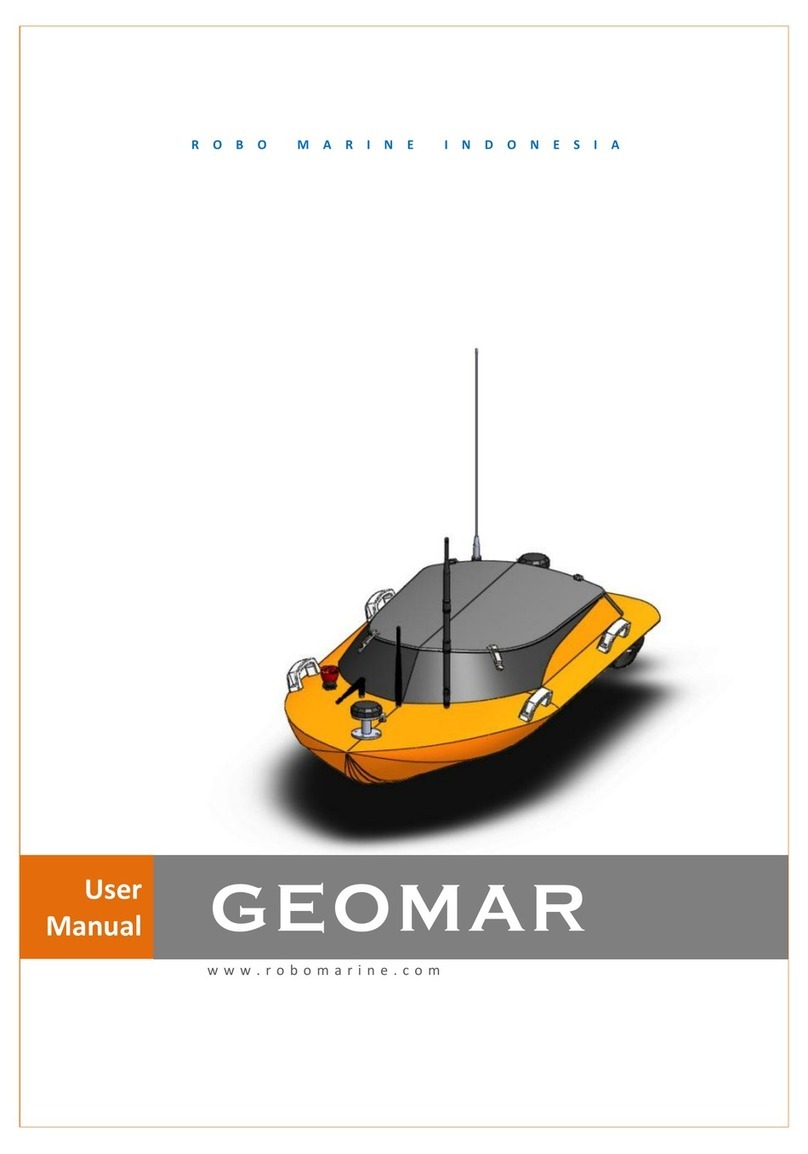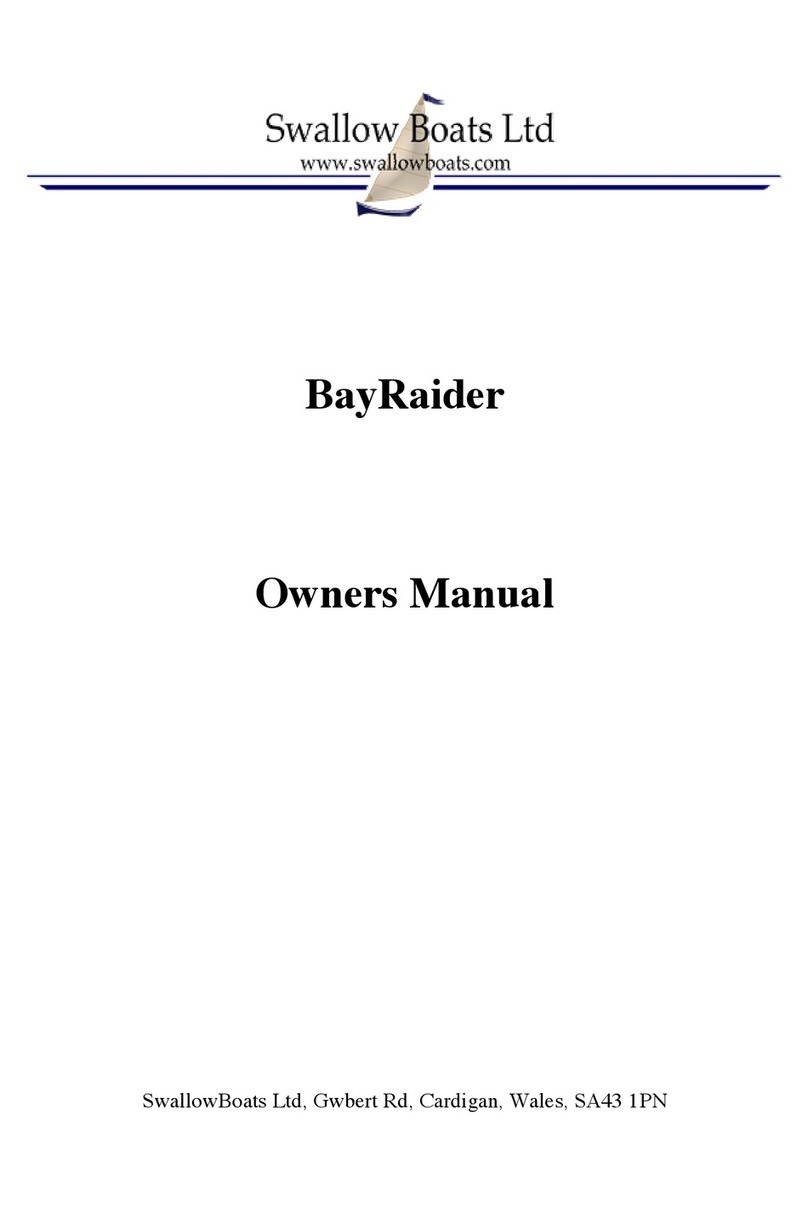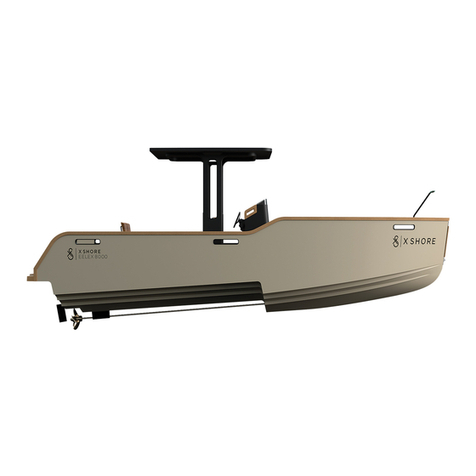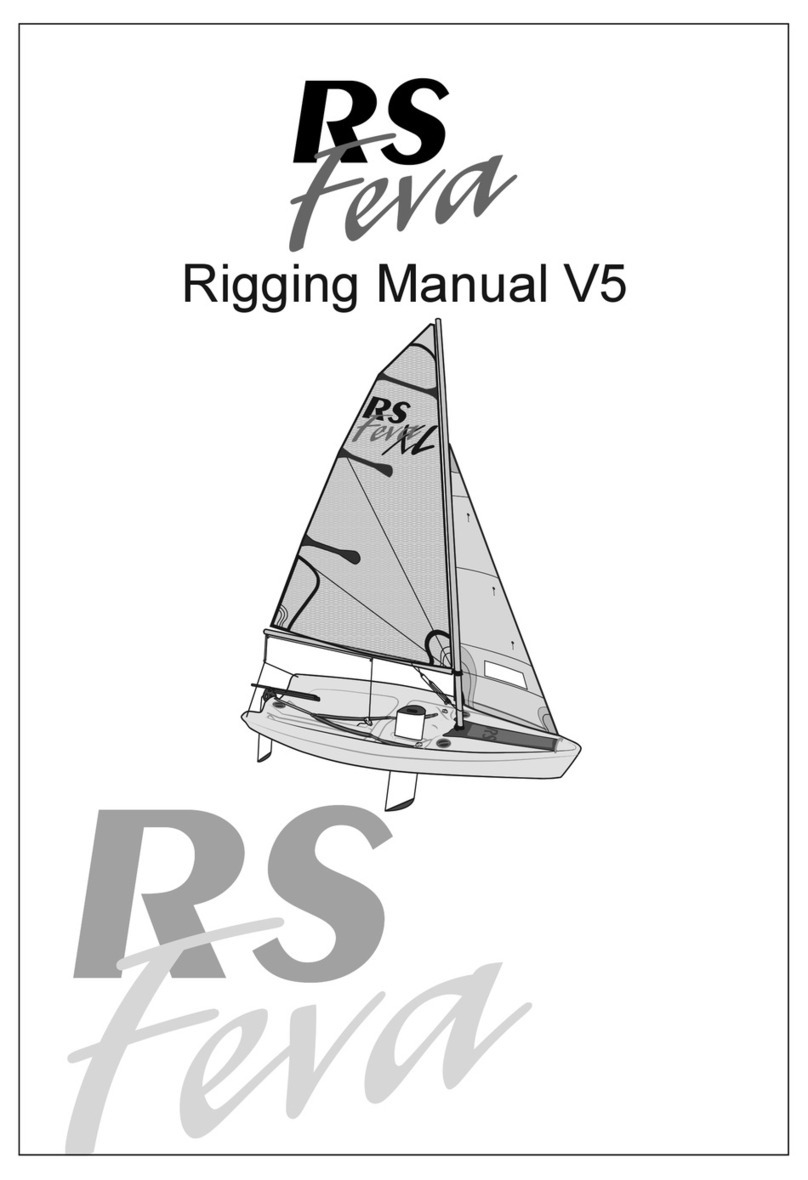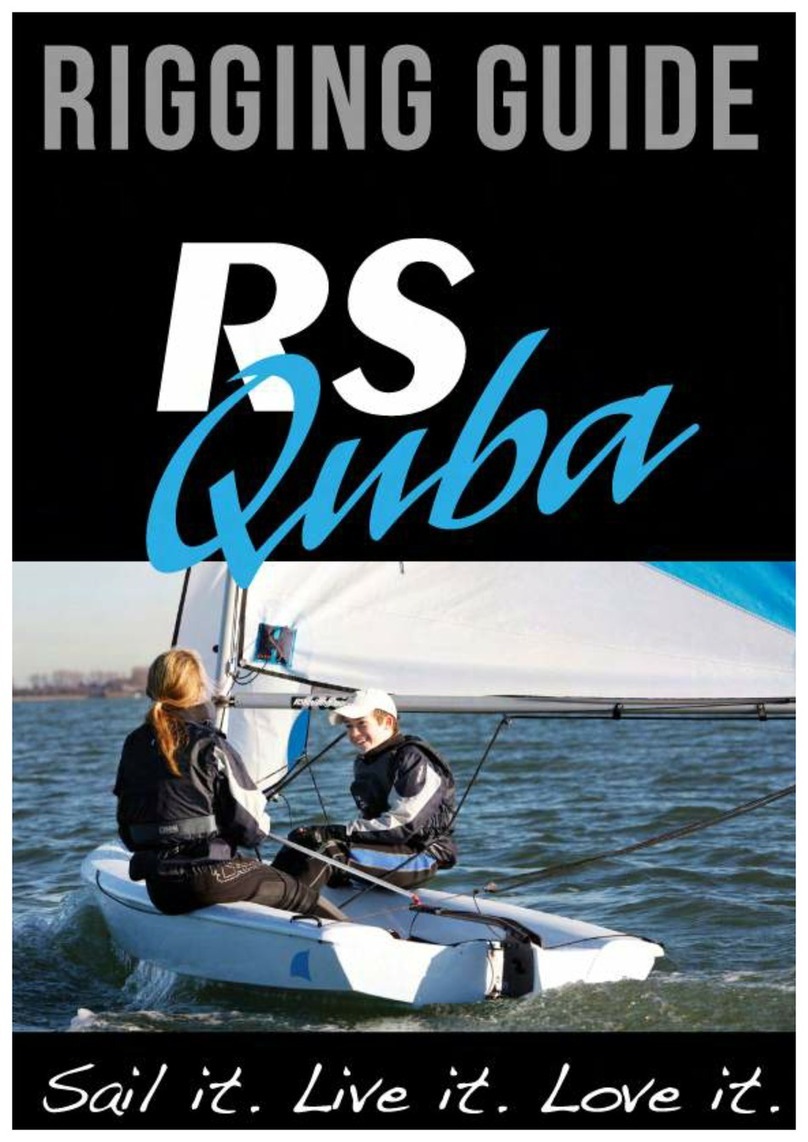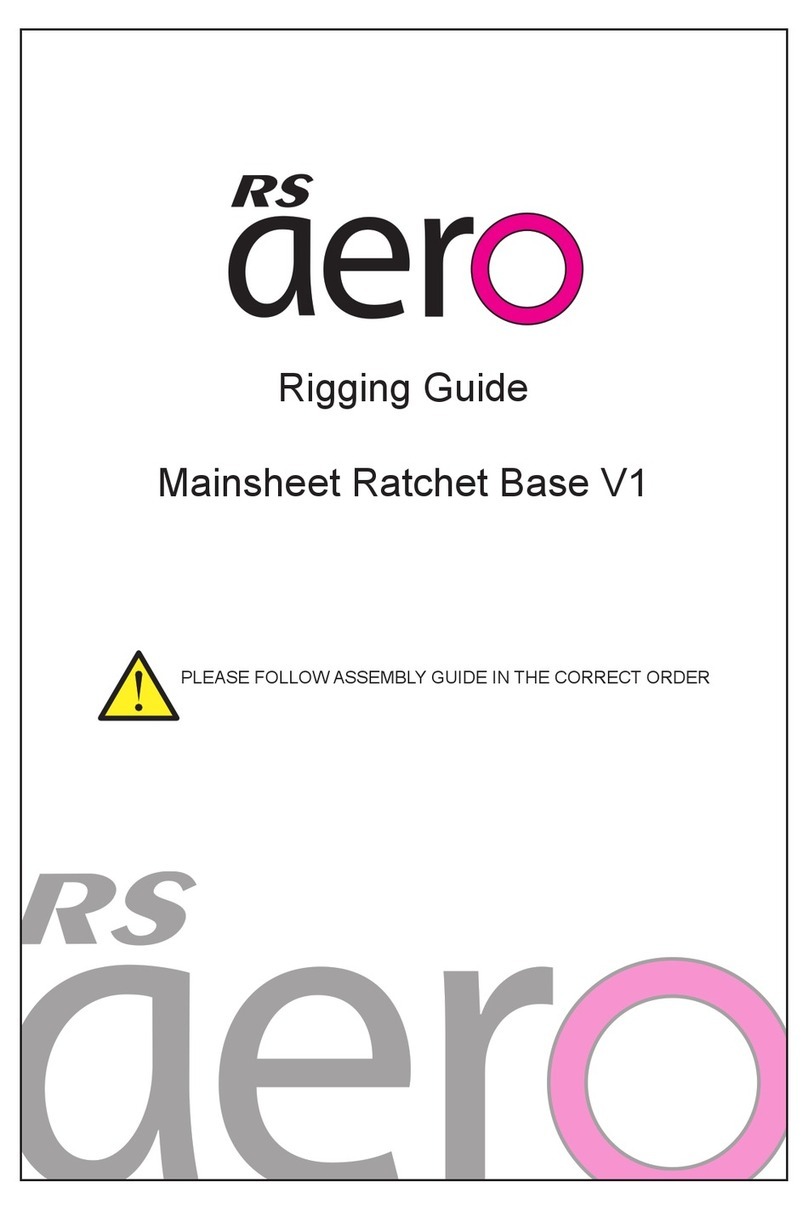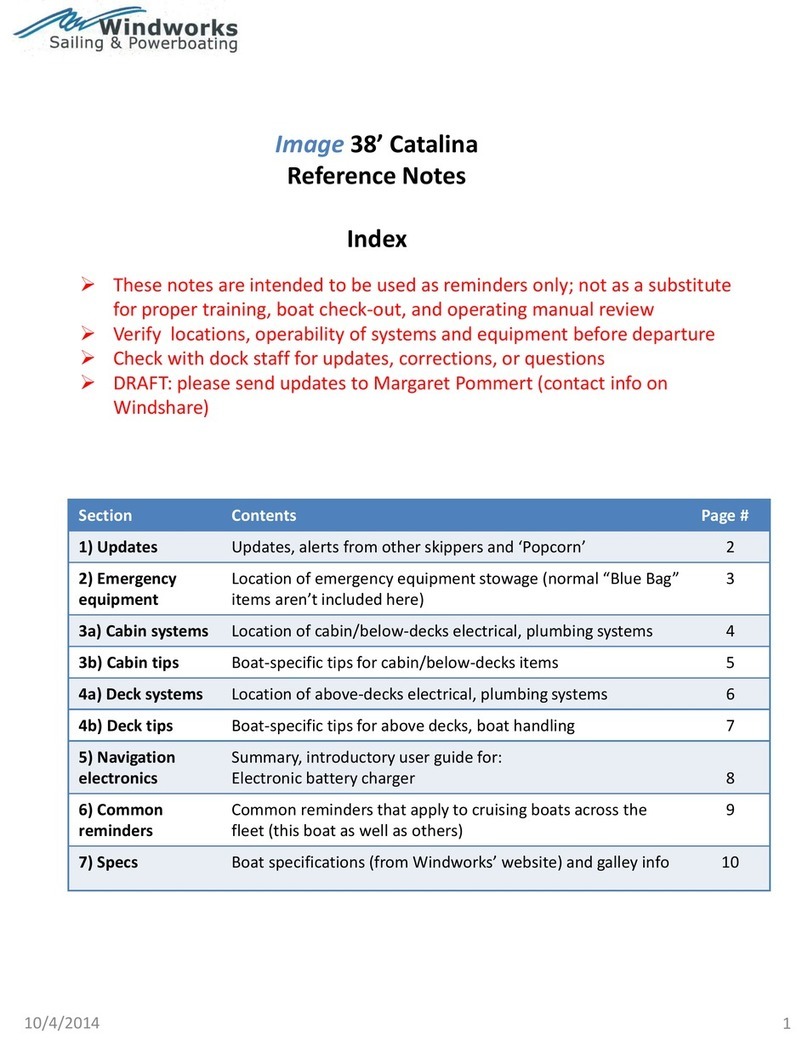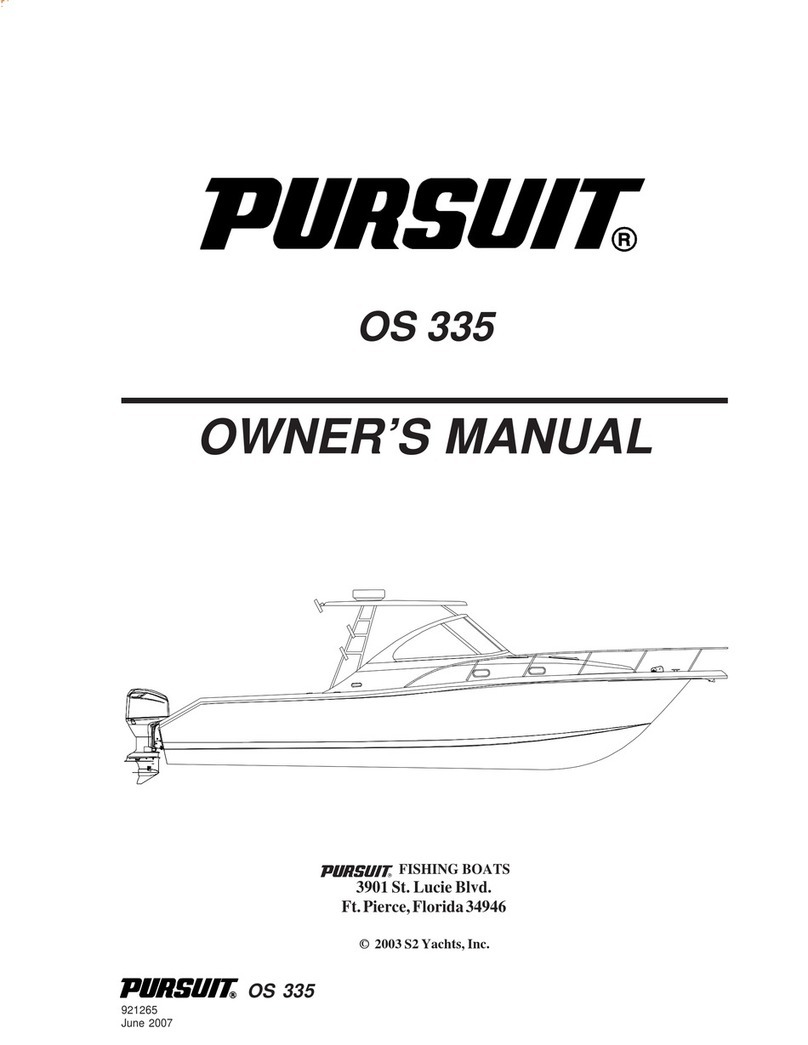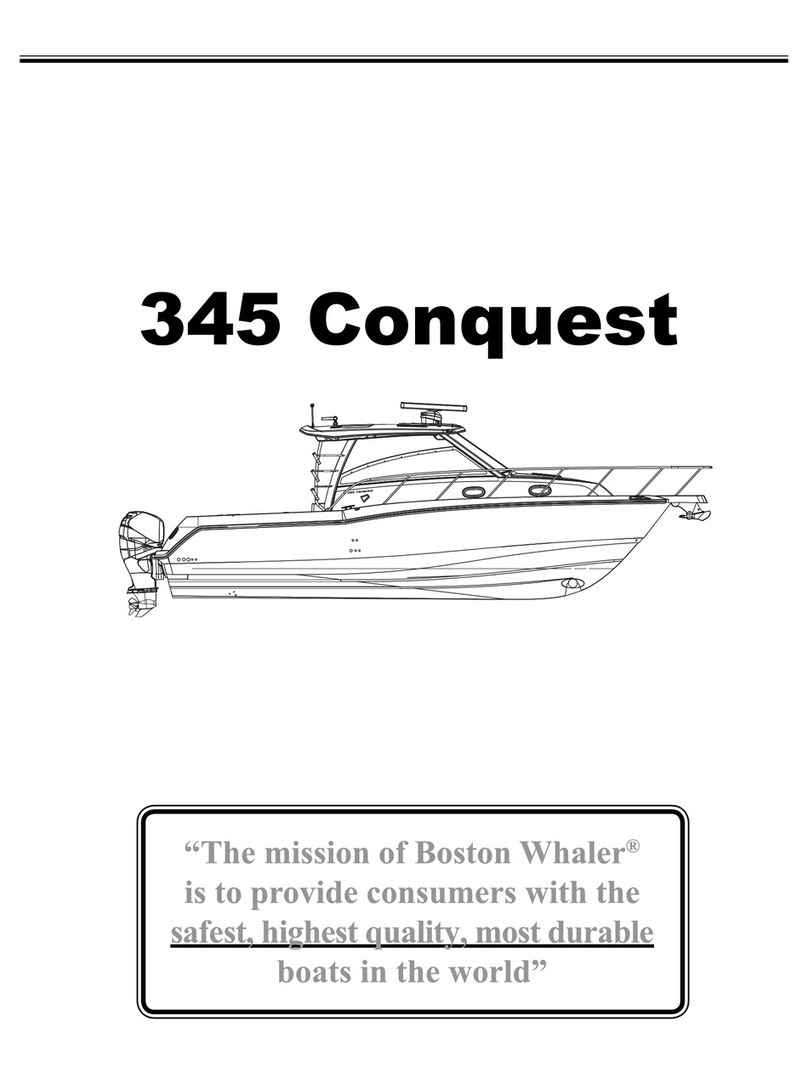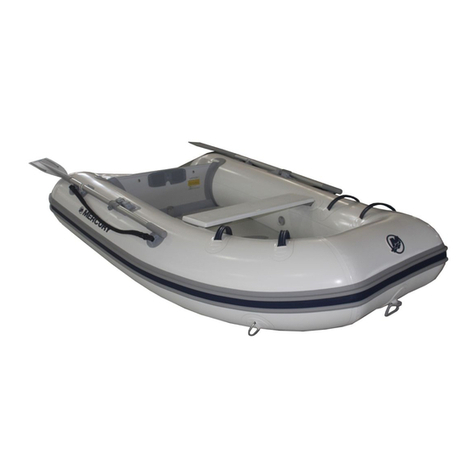Sailing with the asymmetric spinnaker
This is where all similarity ends with existing single handers, and the real fun begins. Don’t be too hasty to get the
kite up –it makes sense to have familiarised yourself with the boat, especially downwind on the angles of sailing
that you would be hoisting or dropping the kite. For the first trial the wind should be no more than 10-12 knots.
Hoisting the spinnaker
So when the moment comes bear off onto a broad reach with plenty of room to leeward. Ease the mainsheet right
out with the boom nearly to the shroud, and the kicker eased as usual for downwind sailing.
In most conditions you should be able to stand up in the boat and steer with the tiller between your legs. Hoist the
spinnaker as quickly as possible.
Sit back down on the windward side deck, pick up the spinnaker sheet and fill the kite and head up slightly to gain
speed. You will probably need to grip the spinnaker sheet in your tiller hand while you pull the mainsheet back in
somewhat.
For those of you familiar with asymmetric sailing, you will remember how important it is to ease the kite as far as
possible, so the luff is on the verge of curling. An over-sheeted kite is such a killer to speed. Conversely nothing
will drop you in the drink faster than a collapsing kite –so forget the mainsail and stay sharp focusing on the luff
of the kite!
Gybing
Bear off easing the kite as you go. Put the kite sheet in your tiller hand and reach in to uncleat the mainsheet. The
quicker you do this the better, as the boat will have slowed down and the mainsheet will have loaded up –you’ll
get to know this feeling and react to it faster each time!
Whilst broad reaching, as you now are, pick up the windward sheet with your front hand and pull it in, so that as
you bear off more to initiate the gybe, the kite is slightly hooked to windward at the clew. It should still be filling
normally and helping to speed the boat into the gybe. Initiate the gybe, and cross over, pulling the new sheet in
as far as you can, hopefully to fill the kite on the new gybe with it barely collapsing at all. Fill the kite normally, luff
up slightly and pull in the main again.
Dropping the spinnaker
Bear off again and ease the mainsheet exactly as you would when hoisting the spinnaker. Stand up and steer
with the tiller between your legs. Pick up the downhaul and pull in the slack. Release the halliard from the cleat
and pull the sail down as fast as you can. Tidy the sheets.
First time out
Apologies to all the highly experienced, race winning and world girdling yachtsmen amongst you for this last piece
of advice! New boats always take some getting used to. If it is blowing the doors off and the waves are dumping
on the beach, why not curb that impatience to get afloat in your new toy. If the conditions are favourable, the
chances are that you’ll have far more fun and learn the techniques used in the RS Vareo much more quickly.


